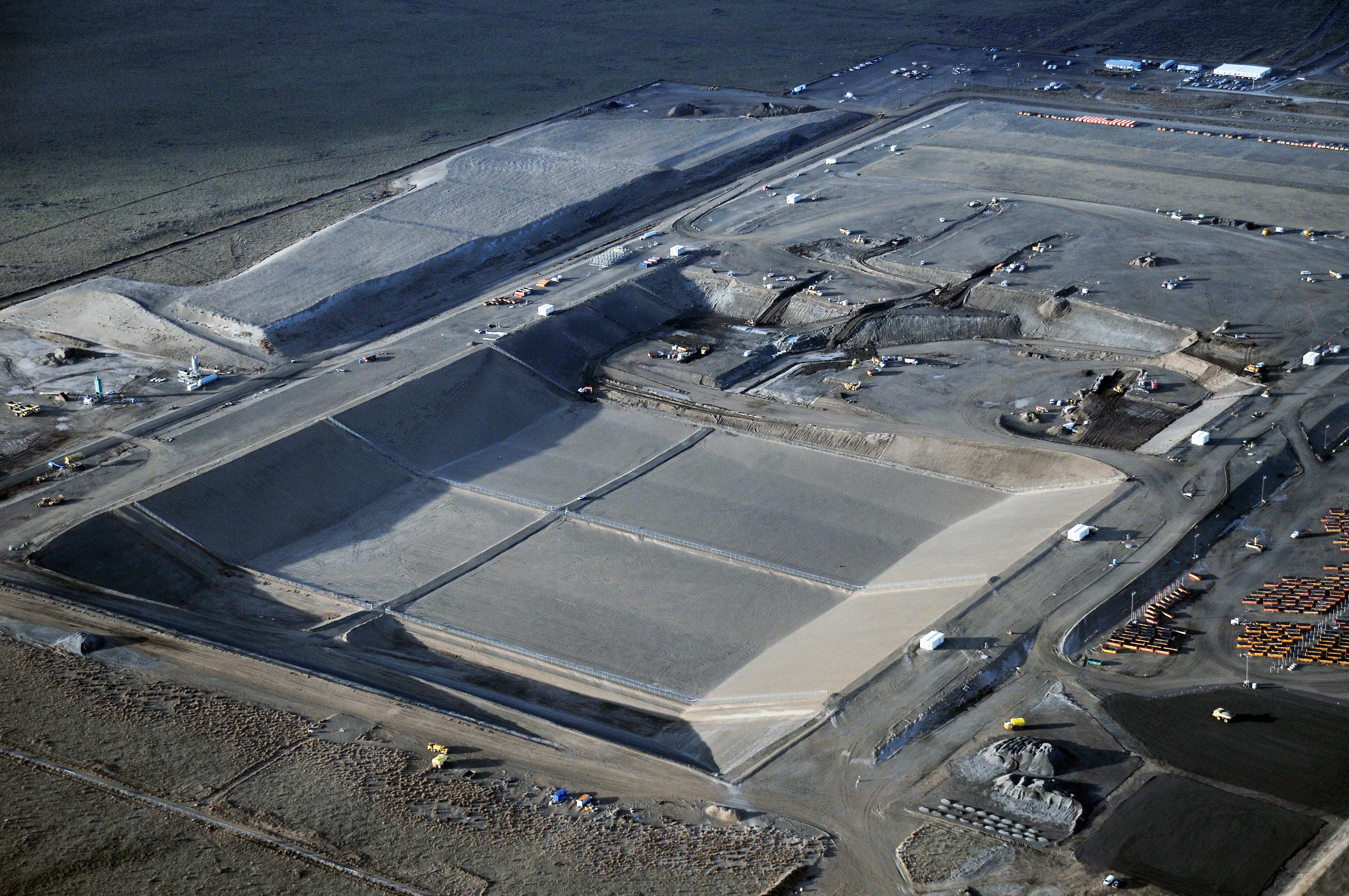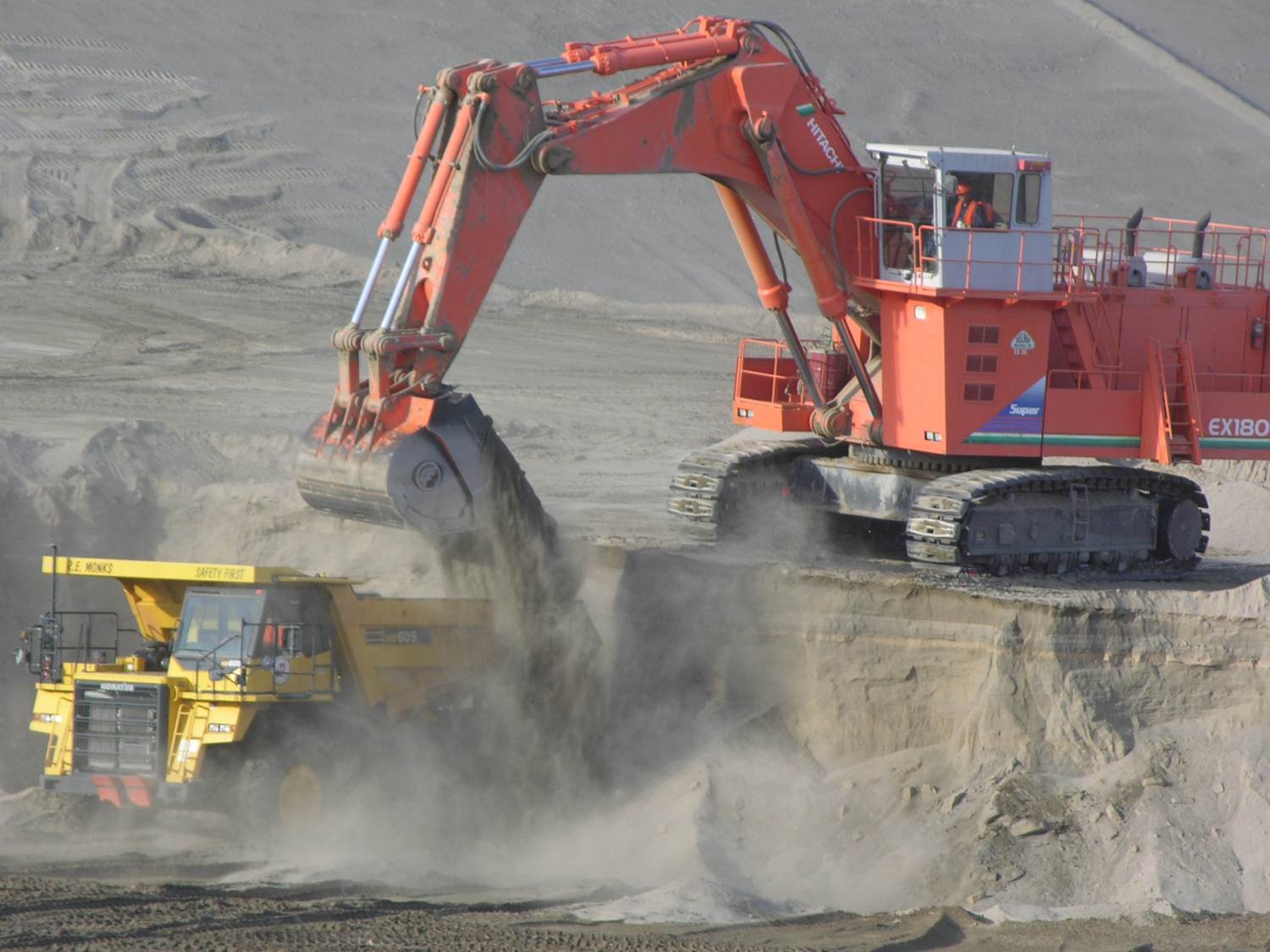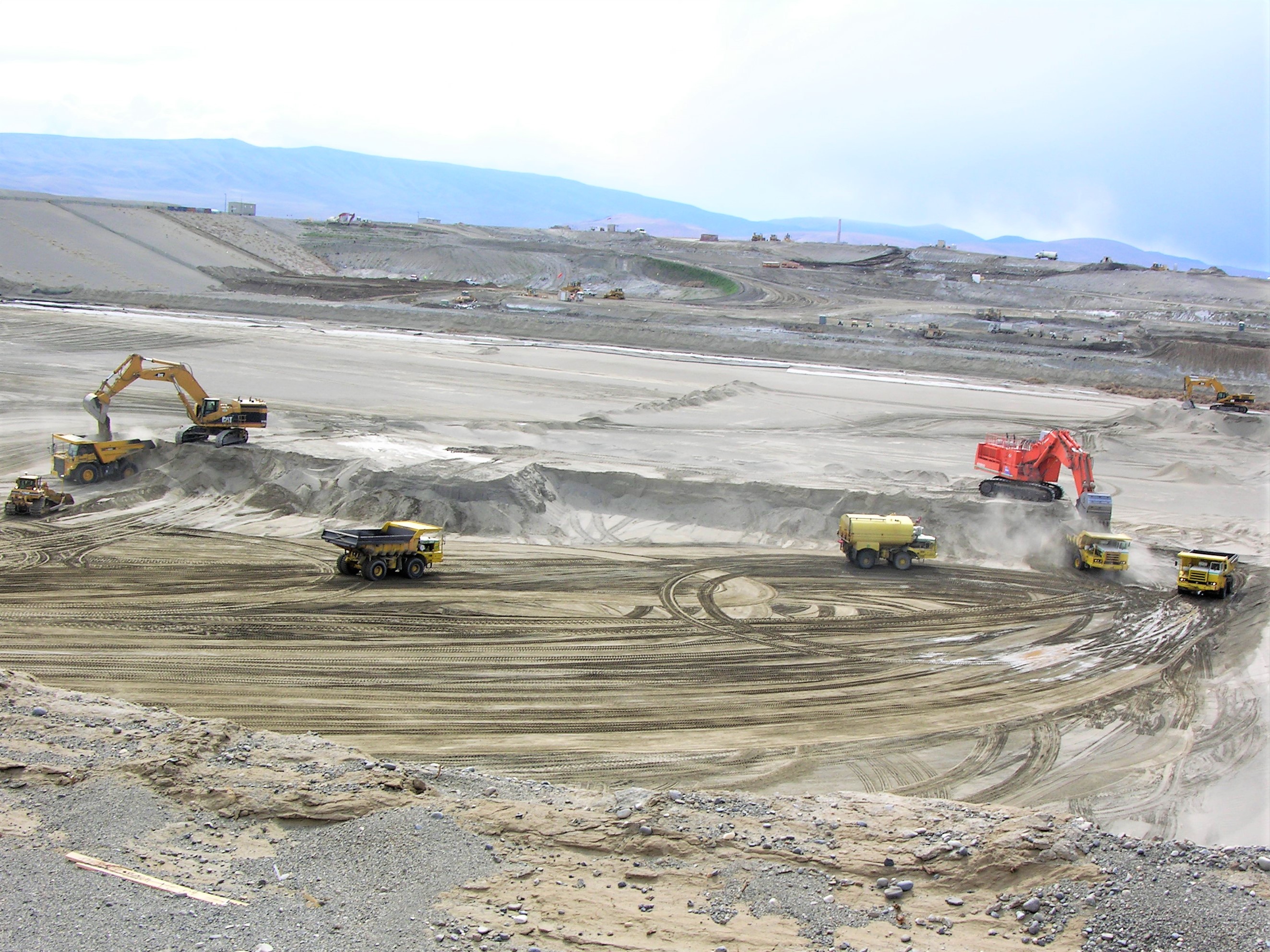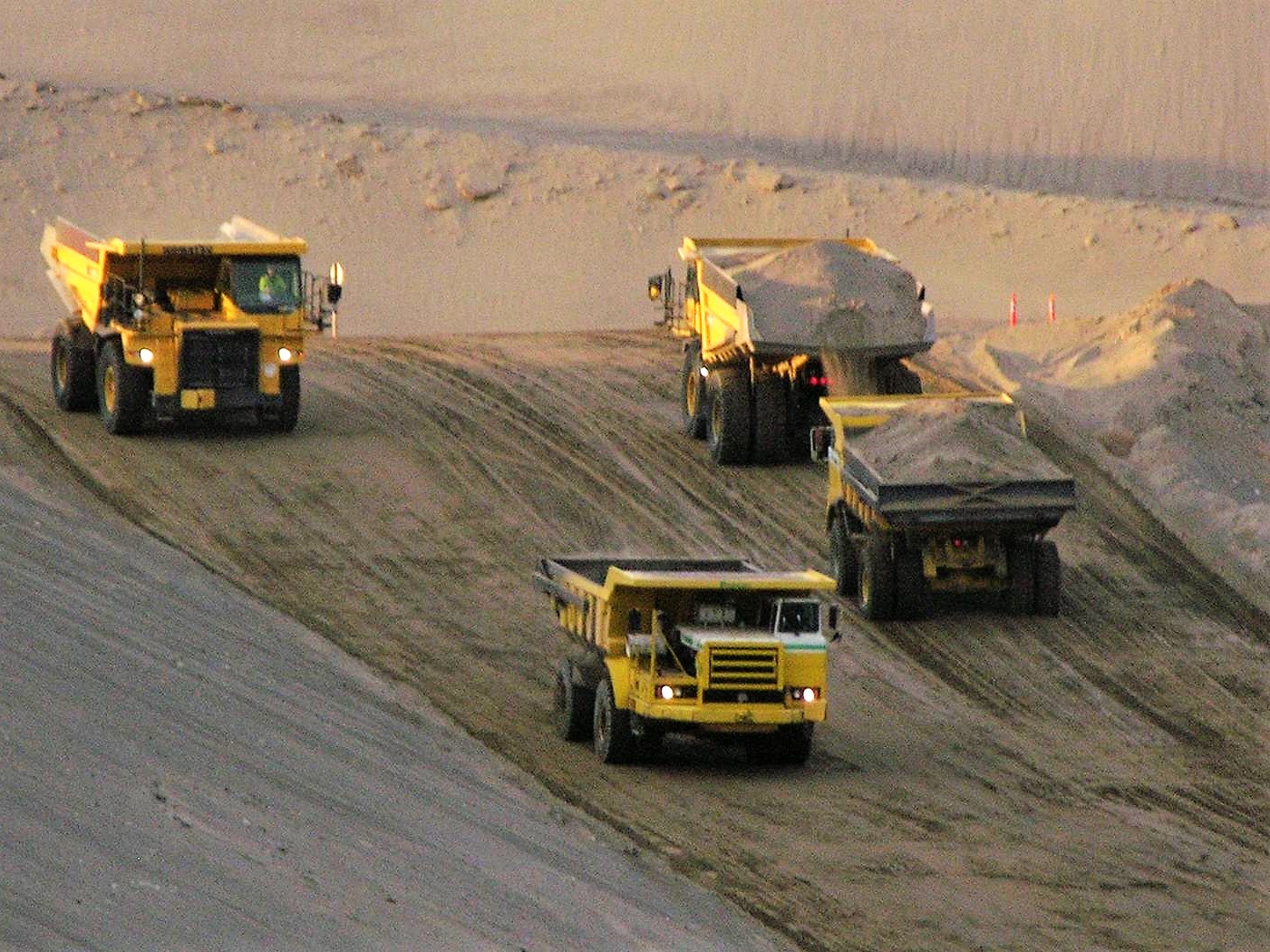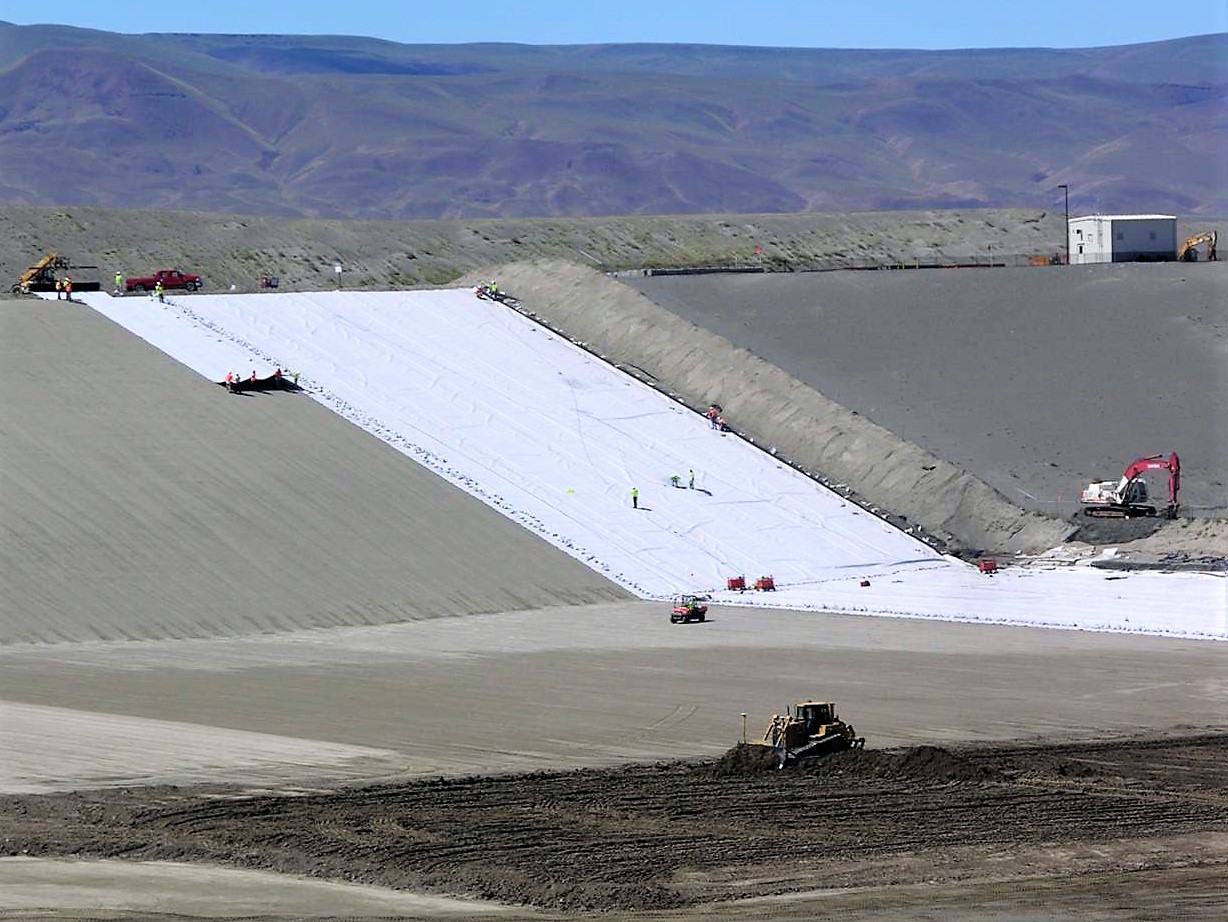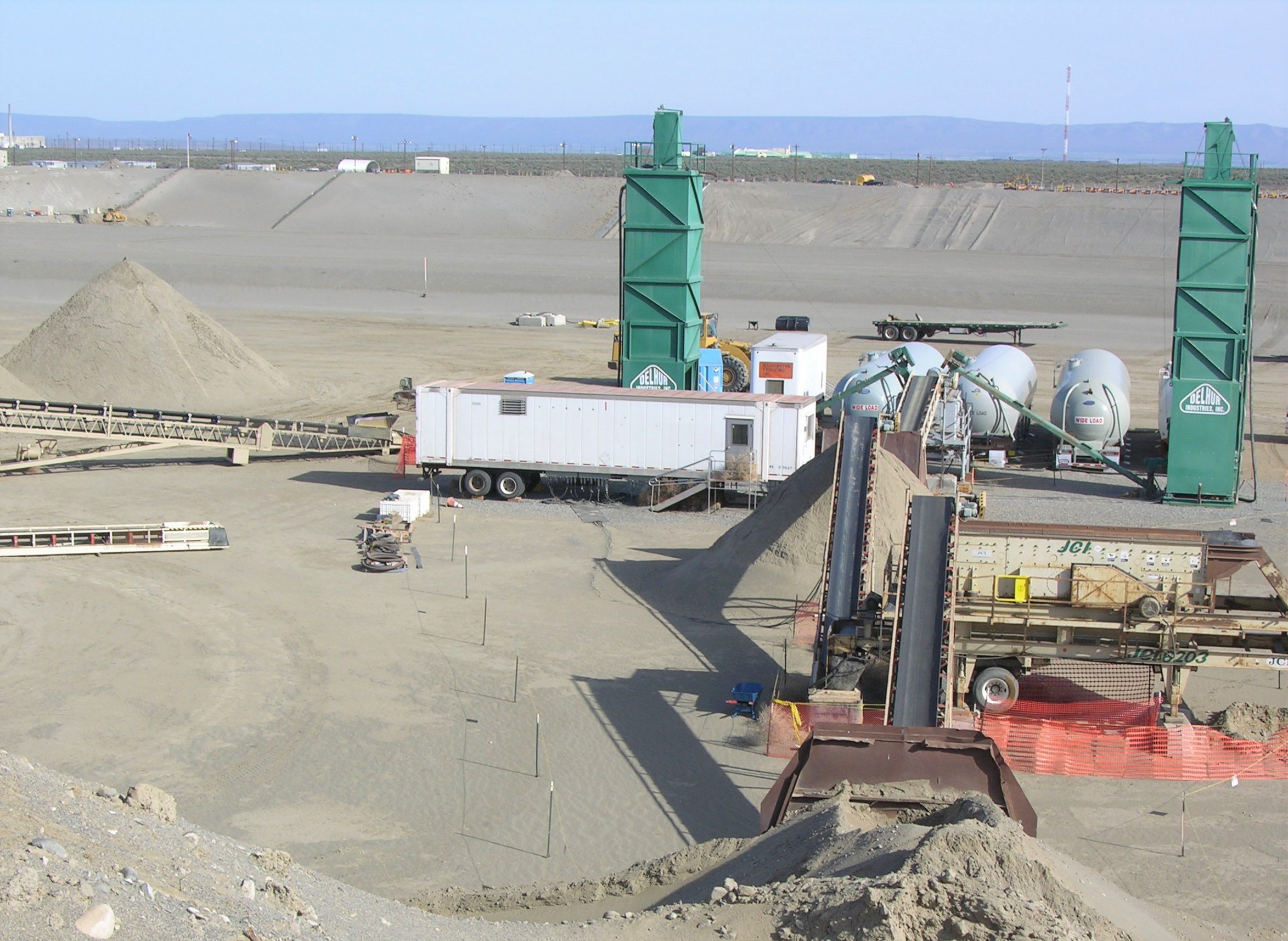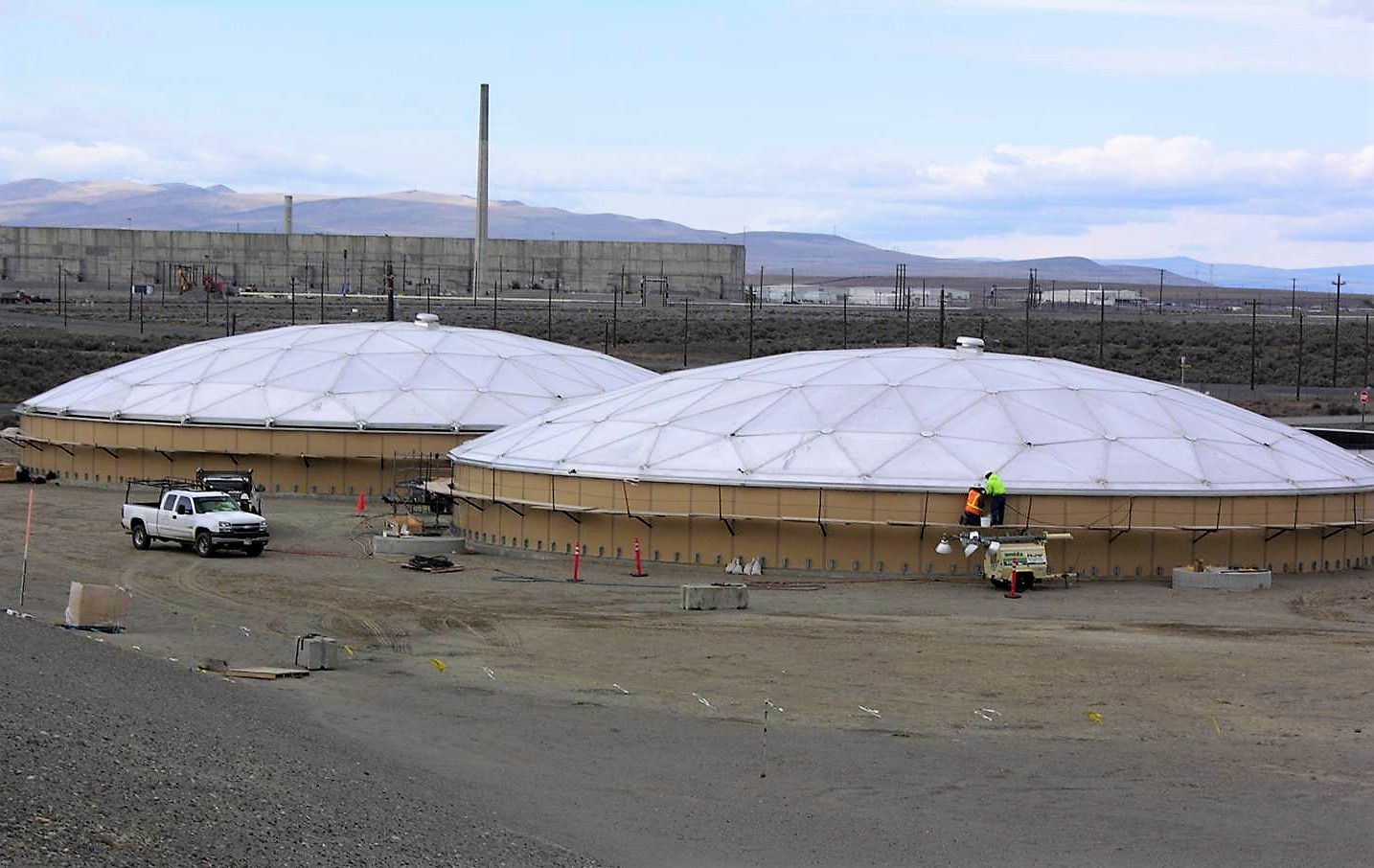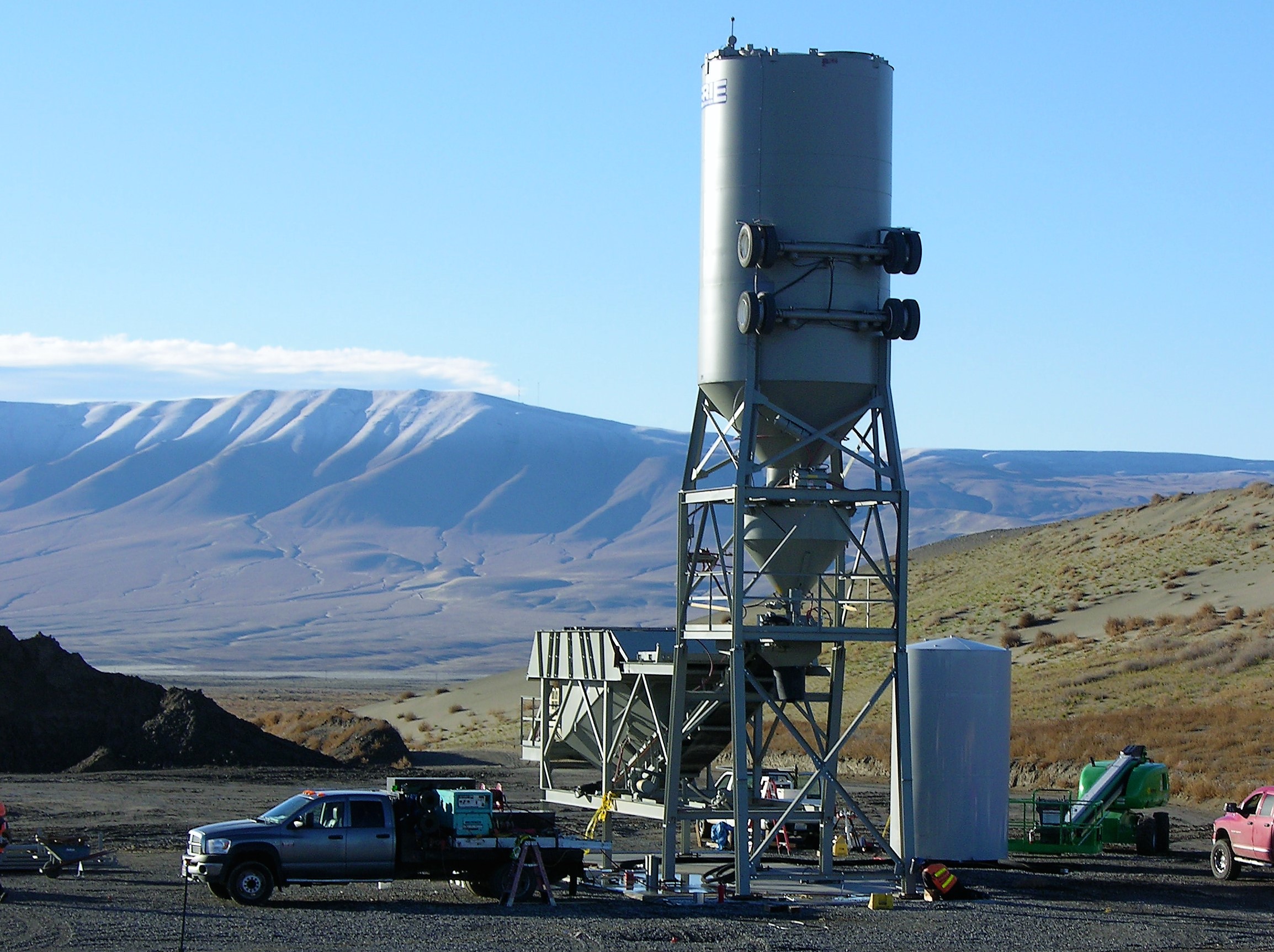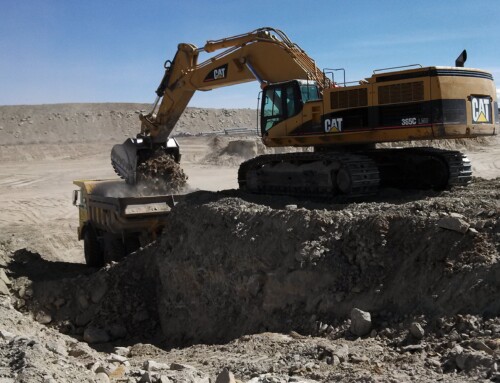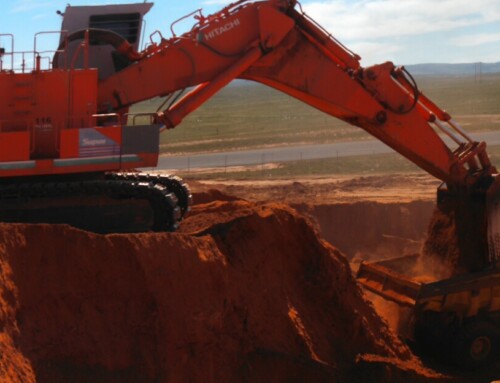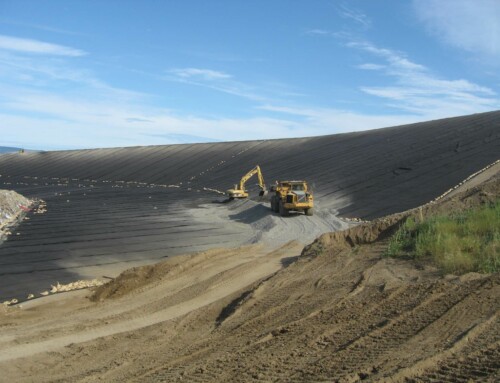Environmental Restoration Disposal Facility – Super Cells 9 & 10 Construction
Washington Closure Hanford
Richland, Washington
Hanford’s Environmental Restoration Disposal Facility (ERDF) is a large landfill that is used for the treatment, disposal and storage of low-level radioactive, hazardous, and mixed wastes generated during the cleanup and remediation activities at the site. ERDF is comprised of a series of disposal cells and associated infrastructure to support facility operations. DelHur has constructed 8 of the 10 disposal cells at the facility, as well as, a good portion of the infrastructure.
DelHur was contracted to perform the construction of Super Cells 9 and 10 (two 30-acre triple lined cells). With this expansion, ERDF’s disposal capacity increased to 18 million tons and the footprint of the facility was increased to approximately 107 acres. Major items of work included approximately 3,400,000 CY of excavation, a liner system comprised of a soil bentonite liner and a double HDPE geomembrane liner with secondary and primary leachate collection recovery systems (LCRS) between the liner layers. The LCRS consisted of gravel that DelHur processed with screening plants on site and an HDPE piping network. An operations layer was placed to a depth of 3.0 ft. over 3:1 side slopes and over the base of the cells. Outside the limits of the cell, the project included the construction of two pre-engineered steel buildings, housing pump station crest pads for the purpose of collecting leachate from the cells and conveying the leachate into two leachate holding tanks. DelHur demolished and removed the existing leachate tanks and installed two 500,000 gallon steel shelled, dual HDPE lined tanks with domed roofs. Additional work performed consisted of the construction of site access roads, the installation of a truck scale and scale house, the installation of a concrete batch plant, and the placement of structural concrete.

